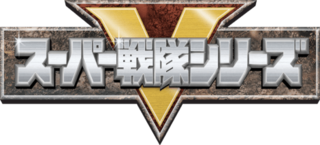 W
WSuper Sentai is a Japanese superhero team metaseries and media franchise consisting of television series and films produced by Toei Company, and Bandai, and aired by TV Asahi. The shows are of the tokusatsu genre, featuring live action characters and colorful special effects, and are aimed at children. Super Sentai airs alongside the Kamen Rider series in the Super Hero Time programming block on Sunday mornings. In North America, the Super Sentai series is best known as the source material for the Power Rangers series.
 W
WBalatack is a Japanese mecha anime produced by Toei Animation, marking as the final installment to Takara's Magne-Robo Franchise. It follows the adventures of five teenagers as they fight against an evil alien force using the titular combining mecha, Barattack. The show aired on TV Asahi between 1977 and 1978 on Sundays between 18:00 and 18:25.
 W
WBattle Fever J is a live-action Japanese TV series. The third entry of the Super Sentai series franchise, Battle Fever J was a co-production of Toei Company and Marvel Comics. A total of 52 episodes aired on TV Asahi between February 3, 1979 and January 26, 1980.
 W
WBakuryū Sentai Abaranger is Toei's twenty-seventh production of the Super Sentai metaseries, and the first series to use TV Asahi's current logo. It aired as a part of TV Asahi's 2003 Super Hero Time block with Kamen Rider 555. The series is based on dinosaurs and explosions. Its action footage was used in Power Rangers Dino Thunder. In addition, episode 10 in nearly its entirety was used for episode 19 of Power Rangers Dino Thunder as an English-dubbed show that the Dino Thunder Power Rangers discover on television.
 W
WChikyu Sentai Fiveman is a Japanese Tokusatsu television series. It was Toei Company's fourteenth installment of the Super Sentai metaseries. It aired on TV Asahi from March 2, 1990 to February 8, 1991, with a total of 48 episodes. The name given by Toei for international distribution is Sky Rangers.
 W
WChōjin Sentai Jetman is a Japanese tokusatsu television series produced by Toei Company and Bandai. It is the fifteenth entry of the Super Sentai metaseries, following the previous series Chikyu Sentai Fiveman. The series aired on TV Asahi on February 15, 1991, to February 14, 1992, with a total of 51 episodes. It is the last Sentai series until Ressha Sentai ToQger to not get adapted into a Power Rangers series.
 W
WChouriki Sentai Ohranger is a Japanese tokusatsu television series and the 19th installment in the long-running Super Sentai metaseries of superhero programs. It is the second ancient civilization-themed Super Sentai, preceded by Dai Sentai Goggle-V. Its footage was used in the American series, Power Rangers Zeo.
 W
WChoushinsei Flashman is the tenth installment in the Super Sentai metaseries produced by Toei Company. It was broadcast on TV Asahi from March 1, 1986, to February 21, 1987 with 50 episodes.
 W
WChoudenshi Bioman is Toei Company's eighth installment in the Super Sentai metaseries. Its 51 episodes aired on TV Asahi from February 4, 1984 to January 26, 1985 with a movie being released during the show's initial run.
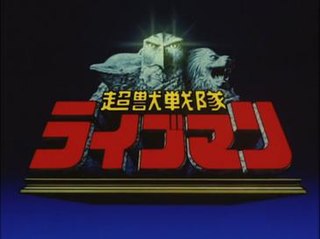 W
WChoujyu Sentai Liveman is the twelfth entry of Toei Company's Super Sentai metaseries. The last Super Sentai title of the Shōwa period, it aired on TV Asahi from February 27, 1988 to February 18, 1989. Its international English title as listed by Toei is simply Liveman. The series was broadcast in France as Bioman 3, being marketed as the direct sequels to Choudenshi Bioman and Bioman 2.
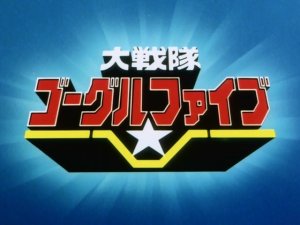 W
WDai Sentai Goggle-V is a Japanese tokusatsu television series. It was the sixth installment in Toei Company's Super Sentai metaseries of tokusatsu television dramas. It aired on TV Asahi from February 6, 1982 to January 29, 1983, with a total of 50 episodes. Its international English title as listed by Toei is simply Goggle V.
 W
WDengeki Sentai Changeman is a Japanese television series and the ninth installment of the Super Sentai metaseries. It aired from February 2, 1985 to February 22, 1986, running for 55 episodes, making it the second longest after Himitsu Sentai Goranger. It is the third Super Sentai series after J.A.K.Q. Dengekitai and Battle Fever J where the Yellow Ranger is absent, followed by 2013's Zyuden Sentai Kyoryuger and 2019's Kishiryu Sentai Ryusoulger.
 W
WDenji Sentai Megaranger is Toei's twenty-first production of the Super Sentai metaseries. The footage was also used in the American series, Power Rangers in Space. Megaranger premiered on February 14, 1997, and concluded on February 15, 1998.
 W
WDenshi Sentai Denjiman is Toei's fourth entry to its Super Sentai metaseries. It was broadcast from February 2, 1980 to January 31, 1981. The title given to this series for international distribution by Toei is Denjiman, Electric Fighters.
 W
WDoubutsu Sentai Zyuohger is a Japanese Tokusatsu television series and the 40th entry of Toei's long-running Super Sentai metaseries, following Shuriken Sentai Ninninger. Zyuohger premiered February 14, 2016, joining Kamen Rider Ghost, and later, Kamen Rider Ex-Aid in the Super Hero Time line-up on TV Asahi affiliate stations, until its conclusion on February 5, 2017. Released as part of Super Sentai's 40th anniversary and Toei's "Super Hero Year", Zyuohger is the fifth series in the franchise whose central theme is animals, 28 years after Choujuu Sentai Liveman, 18 years after Seijuu Sentai Gingaman, 15 years after Hyakujuu Sentai Gaoranger and 9 years after Juken Sentai Gekiranger. The series also has a Minecraft-inspired & Rubik's cube motif. The lead screenwriter for the series is Junko Kōmura.
 W
WEngine Sentai Go-Onger is Toei Company's thirty-second installment in the Super Sentai metaseries of Japanese tokusatsu television series. It premiered on February 17, 2008, a week following the finale of Juken Sentai Gekiranger, and ended on February 8, 2009. It aired as part of TV Asahi's 2008 Super Hero Time block alongside Kamen Rider Kiva. Its footage was used for the American series, Power Rangers RPM and was dubbed into Korean as Power Rangers Engine Force. The catchphrase for the series is "Rushing by at full-throttle mach speed, our slogan is 'go on!'" .
 W
WGekisou Sentai Carranger is a Japanese tokusatsu television show. It was Toei's twentieth production of the Super Sentai metaseries. It is the second vehicle-themed Super Sentai, preceded by Kousoku Sentai Turboranger. The show was written as a parody of its own franchise. Its action footage was used in Power Rangers Turbo.
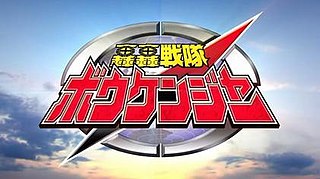 W
WGoGo Sentai Boukenger is the 30th series in Toei's Super Sentai series, a metaseries of Japanese tokusatsu programming. It is the first installment to be broadcast in 16:9 aspect ratio. It premiered on February 19, 2006 at 7:30 JST on TV Asahi's 2006 Super Hero Time programming block with Kamen Rider Kabuto. Its footage was used in the American series, Power Rangers Operation Overdrive in SD, while the original footage was dubbed into Korean for the South Korean series, Power Rangers Treasure Force.
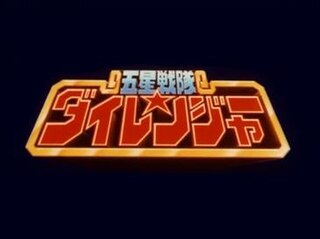 W
WGosei Sentai Dairanger is a Japanese tokusatsu television series. It was the seventeenth production in the long-running Super Sentai metaseries of television tokusatsu dramas produced by Toei Company, following Kyōryū Sentai Zyuranger. It was originally broadcast from February 19, 1993, to February 11, 1994. Toei gave this series the name Star Rangers for international distribution.
 W
WHikari Sentai Maskman is Toei's eleventh entry of the Super Sentai metaseries. It aired on TV Asahi from February 28, 1987 to February 20, 1988, with a total of 51 episodes. Its international English title as listed by Toei is simply Maskman.
 W
WHimitsu Sentai Gorenger is a Japanese tokusatsu superhero television series. Gorenger, created by Shotaro Ishinomori, was the first in the long-running Super Sentai metaseries of tokusatsu programming. The series aired on NET from April 5, 1975, to March 26, 1977, for 84 episodes. Toei distributes the series internationally under the title Five Rangers. The series was released in the Philippines under the title Star Rangers.
 W
WHyakujuu Sentai Gaoranger is Toei's twenty-fifth production of the Super Sentai metaseries airing in 2001 and celebrated the franchise's 25th anniversary. Footage from this show was used in the 2002 American series Power Rangers Wild Force and was later dubbed in 2010 as the retitled Power Rangers: Jungle Force for South Korean television in place of Samurai Sentai Shinkenger. Gaoranger aired alongside Kamen Rider Agito.
 W
WJ.A.K.Q. Dengekitai is the second installment in the Super Sentai metaseries. It was aired from April 9, 1977 to December 24, 1977. It was created by Shotaro Ishinomori, and was screened for 35 episodes. It marks the first appearance of a White Ranger in the franchise. Toei distributes the series internationally under the title The Jackers.
 W
WJuken Sentai Gekiranger is Toei Company's thirty-first entry in the Super Sentai metaseries. Production began on September 29, 2006 with principal photography beginning on October 6, 2006. It premiered on February 18, 2007 on TV Asahi's 2007 Super Hero Time programming block with Kamen Rider Den-O, and concluded its airing on February 10, 2008.
 W
WKagaku Sentai Dynaman is the seventh installment of Toei Company's Super Sentai metaseries. It aired on TV Asahi from February 5, 1983, to January 28, 1984, with a total of 51 episodes. Six episodes of the series were shown in the United States on the USA Network's Night Flight and alternately Nickelodeon's Special Delivery throughout 1988 as a dubbed parody, simply titled Dynaman.
 W
WKaitou Sentai Lupinranger VS Keisatsu Sentai Patranger is a Japanese tokusatsu drama and the 42nd entry of Toei's long-running Super Sentai metaseries, following Uchu Sentai Kyuranger. This series is the first to feature two different teams of heroes: the gentleman thief-based Lupinrangers and the police-based Patrangers who engage in a three-way battle against an alien criminal organization targeting Earth. It is also the first Super Sentai TV series to not have an ending theme like many of TV Asahi's other shows. Lupinranger VS Patranger, which was the last Super Sentai series to air entirely in the Heisei era, premiered on February 11, 2018 and ended on February 10, 2019, joining Kamen Rider Build and later, Kamen Rider Zi-O in the Super Hero Time line-up on TV Asahi affiliate stations. Lupinranger VS Patranger began airing in South Korea on June 2020 as Power Rangers Lupin Force VS Patrol Force during its airing.
 W
WKaizoku Sentai Gokaiger is Toei Company's 35th entry in its long-running Super Sentai metaseries of Japanese tokusatsu television series following Tensou Sentai Goseiger. It follows a Pirate motif and premiered on TV Asahi on February 13, 2011, joining Kamen Rider OOO and then Kamen Rider Fourze as a program featured in TV Asahi's Super Hero Time programming block, until Gokaiger 's conclusion on February 19, 2012. The catchphrase for the series is "Let's make it showy!" .
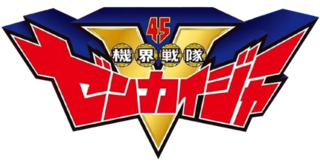 W
WKikai Sentai Zenkaiger is a Japanese tokusatsu television drama, the 45th entry in Toei's long-running Super Sentai series, and the second produced in the Reiwa era. Additionally, it commemorates the 45th anniversary of the Super Sentai franchise and is the second special anniversary series following Kaizoku Sentai Gokaiger.
 W
WKishiryu Sentai Ryusoulger is a Japanese tokusatsu drama and the 43rd entry of Toei's long-running Super Sentai series, succeeding Kaitou Sentai Lupinranger VS Keisatsu Sentai Patranger and following the four week special TV miniseries Super Sentai Strongest Battle. Although the series primarily aired in the Reiwa era, it is considered the final Heisei era series, since the last time an era changed, the era was based on when the show started. It is the fourth Super Sentai to utilize the motif of dinosaurs, having been preceded by Zyuden Sentai Kyoryuger, as well as the first to utilize the motif of knights.
 W
WKousoku Sentai Turboranger is both the thirteenth entry of Toei Company's Super Sentai metaseries and the first title of the Heisei period. it was aired on TV Asahi on February 25, 1989 to February 23, 1990 with a total of 51 episodes. Its international title in English was listed by Toei is Turbo Rangers. Turboranger was also the first Super Sentai series to air on Friday instead of Saturday.
 W
WKyōryū Sentai Zyuranger is a Japanese tokusatsu television series and the sixteenth installment in the long-running Super Sentai metaseries of superhero programs. Produced by Toei and Bandai, it aired on TV Asahi from February 21, 1992 to February 12, 1993, with a total of 50 episodes. It was the first Sentai series to have a regular Sixth Ranger, and the first to introduce the concept of sentient, living mecha—a theme that has been used frequently in the franchise ever since. It was also the first Sentai series to be adapted into an installment of the American Power Rangers series. Footage from all 50 episodes was extensively used for the first season of Mighty Morphin Power Rangers. The core Zyuranger costumes were used in all three seasons of Mighty Morphin Power Rangers and were used as the original Power Rangers costumes while the Dragon Ranger costume was adapted into the Green Ranger's costume and was used throughout Season 1 and in early Season 2. The title Toei gives this series for international distribution is Galaxy Rangers.
 W
WKyuukyuu Sentai GoGoFive is the twenty-third entry of the long-running Japanese Super Sentai metaseries. Its footage was used in the American television series, Power Rangers Lightspeed Rescue.
 W
WMahō Sentai Magiranger is Toei Company's twenty-ninth production of the Super Sentai metaseries. The action footage was used in Power Rangers Mystic Force and both shows had scenes simultaneously shot in New Zealand. The main themes of this series are courage and love of family. This series was dubbed into Korean under the title Power Rangers Magic Force.
 W
WMashin Sentai Kiramager is a Japanese tokusatsu drama. It is the 44th entry of Toei's long-running Super Sentai series and the first season exclusively in the Reiwa era. Kiramager's main motifs are genies, gemstones and vehicles. It is the fourth vehicle-themed Super Sentai season following Engine Sentai Go-onger, the second magic-themed season following Mahou Sentai Magiranger and the first season to use both a genie motif and a gemstone motif.
 W
WMirai Sentai Timeranger is a Japanese Tokusatsu television series and the 24th series in Toei's Super Sentai metaseries. Footage from this series was used in the American production Power Rangers Time Force. The opening narration of the series announces, "People from the future in the year 3000 AD and one man have met by chance, for the sake of marking a new passage of time…!" . Timeranger was released on DVD by Shout! Factory in North America on July 31, 2018. This is the 9th Super Sentai Series to be released on Region 1 DVD in North America. The series debuted on February 11, 2000, when it replaced Kyuukyuu Sentai GoGoFive in TV Asahi's 7:30 JST time-slot, joining the recently-debuted Kamen Rider Kuuga in what would 3 years later become the Super Hero Time programming block.
 W
WNinja Sentai Kakuranger is a Japanese tokusatsu television series. It was Toei Company Limited's eighteenth production of the Super Sentai metaseries. The name given to this series by Toei for international distribution is Ninja Rangers.
 W
WNinpuu Sentai Hurricaneger is Toei's twenty-sixth production of the Super Sentai metaseries. The catchphrase for the series is "Unknown even to others, unknown even to the world, we become shadows to defeat evil!" . Its footage was used in the American series, Power Rangers Ninja Storm. On April 1, 2013, Shun Shioya, Nao Nagasawa, Kohei Yamamoto, and Yujiro Shirakawa, who played Hurricane Red, Hurricane Blue, Hurricane Yellow, and Kabuto Raijer, respectively, announced that a 10th-anniversary V-Cinema release called Ninpuu Sentai Hurricaneger: 10 Years After would be produced. This is the first time a movie has been made commemorating the anniversary of a single Sentai series. The movie is a direct to DVD and Blu-ray release. Shout! Factory released Ninpuu Sentai Hurricaneger: The Complete Series in North America on March 26, 2019. This is the twelfth Super Sentai series to be released in North America. It joined Kamen Rider Ryuki.
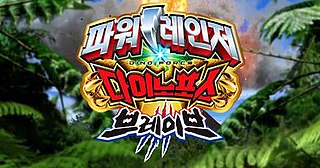 W
WPower Rangers Dino Force Brave is a 2017 South Korean tokusatsu television show produced by Daewon Media, the same company which distributes the Super Sentai Series in South Korea under the "Power Rangers" label despite being unrelated to Saban Brands. It serves as a sequel to the 2013 Super Sentai Series, Zyuden Sentai Kyoryuger. Toei Company, the owner of the Super Sentai franchise, collaborated in the filming. Kyoryuger director Koichi Sakamoto returned to direct the series. The show began its broadcast in South Korea on April 1 with two episodes a week for the first two weeks before moving to one episode a week starting April 15. The majority of the main cast is composed of K-pop artists.
 W
WRessha Sentai ToQger is a Japanese television series, a Tokusatsu drama of the 38th installment in Toei Company's Super Sentai metaseries, following Zyuden Sentai Kyoryuger. It premiered on TV Asahi affiliates on February 16, 2014, joining Kamen Rider Gaim and later, Kamen Rider Drive in the Super Hero Time programming block, and it ended on February 15, 2015. The series has a train motif, and unlike previous series where the heroes are named after colors, the heroes in ToQger are numbered and regularly swap colors during battle.
 W
WSamurai Sentai Shinkenger is the title of Toei Company's thirty-third entry in its long-running Super Sentai metaseries of Japanese tokusatsu television series. It premiered on February 15, 2009, the week following the finale of Engine Sentai Go-onger, and ended on February 7, 2010. It joined Kamen Rider Decade as a program featured in TV Asahi's Super Hero Time programming block, and following Decade's finale, it aired alongside Kamen Rider W. It incorporates elements from the Jidaigeki drama genre and Japanese themes and aesthetics. The catchphrase for the series is "Authorized by divine providence!!" .
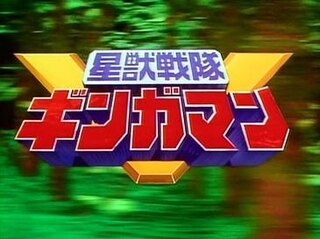 W
WSeijuu Sentai Gingaman is a Japanese tokusatsu television series. It is Toei's 22nd entry of the Super Sentai metaseries. The series aired from February 22, 1998, to February 14, 1999. Its footage was used in Power Rangers Lost Galaxy. The lead screenwriter for the series is Yasuko Kobayashi.
 W
WShuriken Sentai Ninninger is a Japanese television series, the 39th entry of Toei's long-running Super Sentai metaseries, following Ressha Sentai ToQger. It is the third ninja-based Sentai, and the fourth to be based on Japanese mythology and culture and premiered on, February 22, 2015, joining Kamen Rider Drive, and later, Kamen Rider Ghost in the Super Hero Time line-up on TV Asahi affiliate stations, until concluding on February 7, 2016. Ninninger also serves as the 40th anniversary of the franchise. The lead screenwriter for the series is Kento Shimoyama and Kousuke Yamashita serves as the series' composer. Its footage is used for the 2017/2018 American Power Rangers season, Power Rangers Ninja Steel and its follow-up season, Power Rangers Super Ninja Steel.
 W
WTaiyo Sentai Sun Vulcan is the fifth series in Toei Company's Super Sentai tokusatsu metaseries. It was broadcast from February 7, 1981, to January 30, 1982, and is the only Super Sentai series to serve as a direct sequel to its previous series. It is also the first and only series in the franchise to have an all-male Super Sentao team and the first to have fewer than five members in the core team. Its international English title as listed by Toei Company is Sunvulcan.
 W
WTensou Sentai Goseiger is the title of Toei Company's 34th entry in its long-running Super Sentai Japanese tokusatsu metaseries. It follows an angelic motif as well as a trading card theme. It joined Kamen Rider W as a program featured in TV Asahi's Super Hero Time programming block, until the premiere of Kamen Rider OOO. The series ties in with the arcade game Super Sentai Battle: Dice-O, with the characters using cards resembling Carddass cards used in the game to transform and access various weapons, similar to the concept of Kamen Rider Decade and its link to Kamen Rider Battle: Ganbaride. Its footage was used for the 2013 Power Rangers series Power Rangers Megaforce and 1 episode of the 2014 Power Rangers series Power Rangers Super Megaforce.
 W
WTokumei Sentai Go-Busters is the 36th entry in Toei Company's Super Sentai metaseries, following Kaizoku Sentai Gokaiger. Its theme is based on spy movies and cyber technology and premiered on February 26, 2012 on TV Asahi, joining Kamen Rider Fourze and then Kamen Rider Wizard as a program featured in TV Asahi's Super Hero Time programming block.
 W
WTokusou Sentai Dekaranger is the title given to the promotional material for the twenty-eighth production of the Super Sentai metaseries produced by Toei. It aired as a part of TV Asahi's 2004 Super Hero Time block with Kamen Rider Blade. The action footage from the show was used for the American series, Power Rangers S.P.D..
 W
WThe Tokyo Philharmonic Orchestra is recognized as the oldest symphony orchestra in Japan, having been founded in Nagoya in 1911. It relocated to Tokyo in 1938 and has some 166 members as of 2005.
 W
WUchu Sentai Kyuranger is a Japanese tokusatsu drama and the 41st entry of Toei's long-running Super Sentai metaseries, following Doubutsu Sentai Zyuohger. The show premiered on February 12, 2017, joining Kamen Rider Ex-Aid and later Kamen Rider Build in the Super Hero Time line-up on TV Asahi affiliate stations before concluding on February 4, 2018. Kyuranger's primary motifs are constellations and Greco-Roman mythology, and it is also the first Super Sentai series to introduce nine regular members in the beginning instead of five or fewer like previous installments.
 W
WZyuden Sentai Kyoryuger is Toei Company's 37th entry in its long-running Super Sentai metaseries of Japanese tokusatsu television series following Tokumei Sentai Go-Busters. It aired on TV Asahi from February 17, 2013 to February 9, 2014, joining Kamen Rider Wizard then Kamen Rider Gaim in TV Asahi's Super Hero Time programming block. Its footage is used for the 2015/2016 American Power Rangers season, Power Rangers Dino Charge and its follow up season, Dino Super Charge. It also has a South Korea-exclusive sequel, Power Rangers Dino Force Brave.